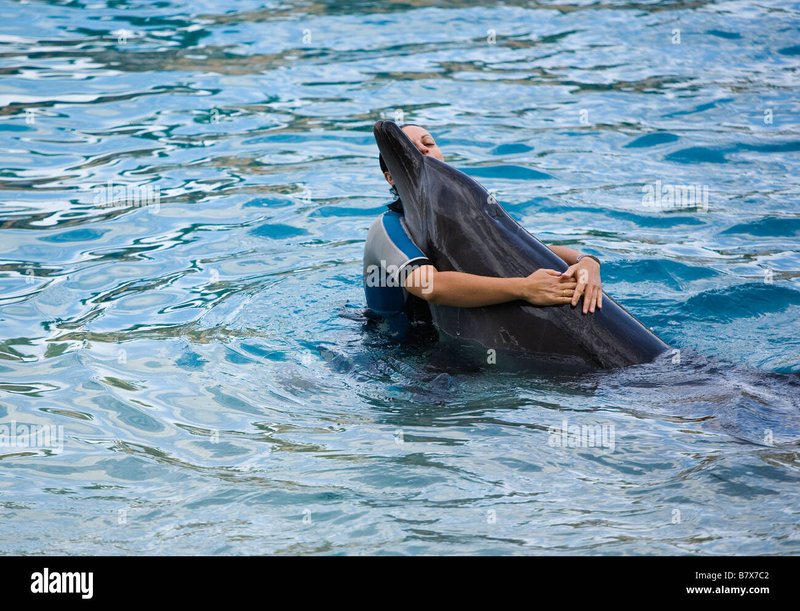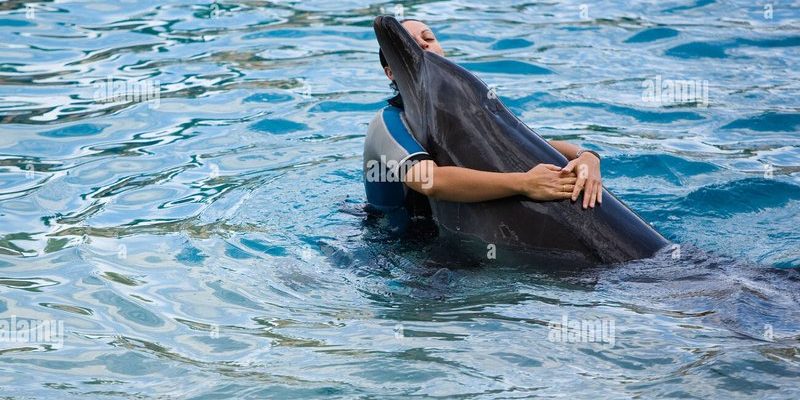
As captivating as these interactions might be, it’s important to approach them with caution and respect for the dolphins’ well-being. These animals are not just friendly faces; they’re wild creatures that deserve our care. Understanding how to engage with bottlenose dolphins safely involves knowing their behavior, habitats, and the regulations in place to protect them. So, grab your swim gear, and let’s dive deeper into this intriguing topic!
Understanding Bottlenose Dolphins
Bottlenose dolphins are social animals found in warm coastal waters all around the world. They’re easily recognizable with their curved mouths, which give them that friendly “smiling” appearance. These dolphins can grow up to 12 feet long and weigh over 1,000 pounds, which is quite impressive. But despite their size, they are known for their intelligence and complex social structures.
These dolphins communicate using a variety of clicks, whistles, and body movements, which can be quite fascinating to observe. In pods, they display behaviors like hunting cooperatively and playing with each other, showcasing their playful nature. So, when you think about interacting with them, remember that you’re stepping into their world—one that’s rich in social dynamics and communication.
But what does that mean for human interactions? Here’s the thing: dolphins can be unpredictable, and their behavior can change depending on their mood and environment. Understanding their natural habits and needs is crucial if we want to interact with them safely.
The Importance of Respectful Interaction
When thinking about how to interact with bottlenose dolphins, respect is key. It’s essential to keep in mind that these creatures are not domesticated pets. They belong in the wild, swimming freely in oceans and seas. When humans try to engage with them, we must ensure that we do so without disrupting their natural behaviors.
Respect involves:
- Keeping a safe distance
- Avoiding loud noises or sudden movements
- Never feeding or attempting to touch them
By observing from a distance, we allow them to engage on their own terms. It’s like watching a play unfold—a captivating spectacle, but one that requires us to be respectful audience members rather than desperate actors on stage. This approach not only protects the dolphins but also enriches our experience.
Regulations and Guidelines for Dolphin Interactions
Many countries have established regulations to protect dolphins, especially when it comes to human interactions. These laws are important because they help ensure that both dolphins and humans stay safe. For instance, in many places, swimmers must keep a certain distance from dolphins in the wild. This distance helps reduce stress on the animals and minimizes the risk of injury.
You might be wondering, “What kind of guidelines exist?” Here are some common regulations to look out for:
- No swimming with dolphins in the wild without permits.
- Boat operators must adhere to speed limits near dolphins.
- Feeding dolphins is strictly prohibited.
Following these regulations is vital. Not only do they protect dolphins, but they also ensure that human encounters are safe and enjoyable.
Benefits of Responsible Dolphin Interaction
Engaging with bottlenose dolphins can offer unique benefits, but only when done responsibly. Many eco-tourism programs provide opportunities to observe dolphins in their natural habitats while adhering to guidelines designed to protect them. This kind of interaction can foster a greater appreciation for marine life and the importance of conservation.
When we engage responsibly, we gain insights into their behavior, social structures, and communication methods. This understanding can lead to advocacy for their protection in the wild, helping ensure that future generations can enjoy the beauty of these amazing creatures.
Some benefits include:
- Enhanced appreciation for marine ecosystems
- Increased awareness about conservation efforts
- Educational opportunities for children and adults alike
By participating in regulated activities, we not only learn but also contribute to the protection of bottlenose dolphins.
Risks and Considerations
Despite the allure of interacting with dolphins, there are inherent risks for both humans and dolphins. Dolphins can be curious but also powerful and unpredictable. Approaching them too closely or behaving inappropriately can stress them out or provoke aggressive reactions.
For humans, there are risks like potential injuries from close encounters or adverse reactions to dolphin behavior. That’s why it’s critical to educate ourselves about dolphin behavior and the appropriate ways to interact.
Here are some risks you should keep in mind:
- Disturbing the dolphin’s habitat can have negative effects.
- Human interactions can lead to stress and behavioral changes in dolphins.
- Improper handling can result in injury.
Awareness of these risks is the first step in ensuring safety and well-being for everyone involved.
Alternatives to Direct Interaction
If you’re eager to connect with dolphins, there are several alternatives to direct interaction that can be equally fulfilling. Consider visiting aquariums or marine research centers that prioritize education and conservation. Many of these facilities allow you to observe dolphins in a controlled, respectful environment.
Another option is participating in marine conservation programs. These initiatives often involve habitat restoration, beach cleanups, and educational workshops. You’re not just learning about dolphins; you’re contributing to their ongoing protection, which can be tremendously rewarding.
In the end, there are various ways to appreciate bottlenose dolphins without direct interaction. This approach not only safeguards their natural behaviors but also enriches your experience in a meaningful way.
Thinking about how to interact safely with bottlenose dolphins? It all comes down to respect, awareness, and understanding. By following guidelines, respecting their habitats, and choosing responsible ways to engage, we can enjoy the incredible experience of sharing our planet with these fascinating creatures.
Whether it’s through observation, education, or conservation efforts, we can cultivate a deep appreciation for dolphins while ensuring their safety and well-being. Remember, it’s not just about the thrill of a close encounter. It’s about building a respectful relationship with the wild world, one that honors the beauty and intelligence of bottlenose dolphins. So, the next time you find yourself near these amazing animals, take a moment to appreciate them from a distance. After all, sometimes the best way to connect is simply to watch and learn.

